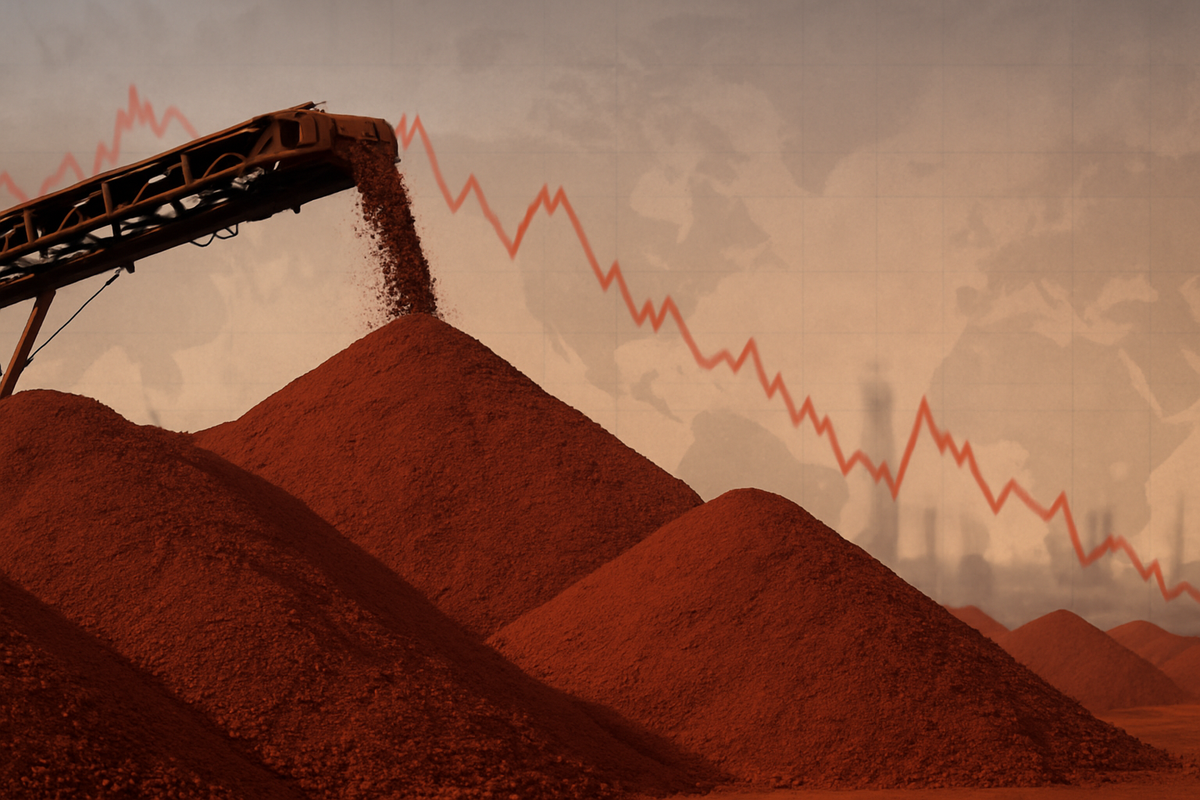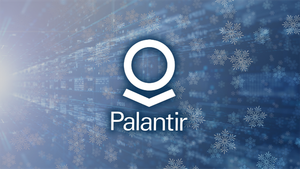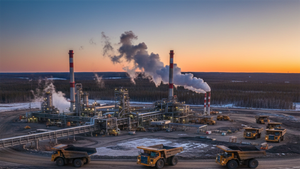
The global iron ore market is currently navigating a period of unprecedented turbulence, as a confluence of factors, primarily a looming supply glut and weakening demand, exerts significant downward pressure on prices. Singapore iron ore futures, a key benchmark, are currently trading at $103.75 per ton, reflecting the market's growing apprehension. This instability threatens to reshape the financial landscape for major mining companies and steel producers worldwide, signaling a challenging environment for commodity investors. The prevailing sentiment indicates that the $100-a-ton support level for iron ore prices is increasingly precarious, setting the stage for potential further declines as the industry grapples with an imbalance of supply and demand.
Unpacking the Market Turmoil: A Deep Dive into Iron Ore's Predicament
The current market volatility is a direct consequence of several converging pressures. As of October 24, 2025, Singapore iron ore futures, specifically the most-active contract, stood at $103.75 per ton, marking a notable decline and putting the commodity on track for its second consecutive weekly drop. Similarly, on China's Dalian Commodity Exchange, the main yuan-priced iron ore futures contract (DCE I2601) closed down 0.58% at 771, while port spot prices across China also experienced decreases of 2-5 yuan. This widespread downturn underscores a significant shift in market dynamics.
A primary driver of this bearish trend is the severe strain on Chinese steel mills, which are facing negative margins due to an uncertain demand outlook and a correction in domestic steel prices. This financial squeeze has compelled mills to curtail their iron ore procurement, leading to elevated inventories at both mills and major Chinese ports. This inventory buildup follows a period of record-high Chinese imports in the preceding month, exacerbating the oversupply issue. Furthermore, critical economic indicators in China, such as crude steel output and urban fixed-asset investment, have slumped—the latter for the first time since the pandemic—painting a grim picture for future demand from the world's largest steel consumer.
Adding to the supply concerns is the imminent operationalization of Guinea's massive Simandou project. With rail and port facilities slated for inauguration on November 11, this project is poised to introduce a substantial new stream of high-grade iron ore into the global market. This influx of supply is expected to intensify competition and further challenge the dominance of established producers in Australia and Brazil, potentially pushing prices down even further. While there was a brief uptick in market sentiment earlier in the week, fueled by expectations of Chinese economic stimulus and a reported 1% increase in steel production, the overarching narrative remains one of caution and impending pressure. Upcoming stricter environmental restrictions in Tangshan, set to suppress blast furnace operations, are also expected to temporarily reduce iron ore demand, adding to the short-term downward price pressure.
Corporate Fortunes in Flux: Winners and Losers in a Turbulent Market
The intensifying pressure on iron ore prices is creating a clear divide between potential winners and losers in the global financial markets. Major iron ore producers are facing significant headwinds, while steel companies, though not immune to broader economic forces, may see some relief in their raw material costs.
Leading global miners are directly exposed to the fluctuations in iron ore prices, and recent trends indicate a challenging period. BHP Group (ASX: BHP), despite its exceptionally low production costs of around $17.29 per ton, reported a 26% decline in underlying attributable profit for the 2025 financial year, its weakest performance since 2020. This downturn was largely driven by a 19% decrease in average realized iron ore prices. Similarly, Rio Tinto (ASX: RIO) saw its first-half 2025 underlying profit fall by 16% year-on-year to $4.81 billion, leading to its lowest interim dividend since 2018. The company is also battling increased production costs in Australia's Pilbara region and softer global steel demand. Brazilian mining giant Vale (NYSE: VALE) experienced a 24% year-on-year drop in net income in Q2 2025, with its average realized iron ore fines price falling 13%. While Vale increased its iron ore output and focused on cost management, these efforts were not enough to fully offset the significant impact of price erosion. Fortescue Metals Group (ASX: FMG) also reported a substantial 41% decrease in annual net profit and reduced its dividend, with its Q1 2025 iron ore production and shipments both declining. These companies, despite their scale, are demonstrating their sensitivity to commodity price movements, prompting a focus on cost control and diversification into other minerals like copper and lithium to mitigate risks.
Conversely, steel manufacturers generally stand to benefit from lower iron ore prices, as it reduces their primary input costs. However, this advantage can be offset by other market dynamics. ArcelorMittal (NYSE: MT), one of the world's largest steel producers, could see its raw material expenses decrease, potentially boosting margins. However, the company is also contending with the financial impact of US tariffs, expected to reach $150 million in 2025, and has revised its global steel demand forecasts downward, indicating a cautious outlook. Despite an unexpected surge in overall raw material costs in Q1 2025 (suggesting contractual lags or other factors), ArcelorMittal's Q2 2025 net profit significantly increased due to exceptional gains, even amidst lower sales and production volumes, partly aided by protective tariffs. Nucor (NYSE: NUE), a prominent North American steel producer, also faces a mixed bag. While lower iron ore prices could be beneficial, its Q3 2025 earnings guidance projects a sequential decline across all operating segments due to lower volumes and margin compression in its steel mills, and reduced profitability in scrap processing. Nucor benefits from Section 232 tariffs on steel imports, which support domestic pricing, but its profitability is also heavily influenced by scrap metal prices, which can move independently of iron ore. The complex interplay of input costs, demand, and trade policies means that even for steel producers, the path to sustained profitability in this environment is not straightforward.
Beyond the Immediate: Unpacking the Wider Significance and Ripple Effects
The current turbulence in the iron ore market extends far beyond the immediate price points, reflecting and influencing broader industry trends, creating significant ripple effects across the global economy, and prompting a re-evaluation of regulatory and policy frameworks. This situation also draws parallels with historical commodity price crashes, offering valuable insights into potential long-term impacts.
A key broader trend exacerbating the iron ore market's instability is the persistent slowdown in China's property sector, which traditionally accounts for a substantial portion—around 40%—of its iron ore consumption. Despite record iron ore imports in September 2025, the rising inventories at Chinese mills and ports signal a fundamental weakness in demand. Coupled with China's efforts to curb industrial overcapacity and address environmental concerns through steel output restrictions, the demand side of the equation remains critically challenged. Simultaneously, global production expansion, notably from major players in Australia and Brazil, has outpaced consumption growth. The impending launch of Guinea's Simandou mine in late 2025 is set to further swell global supply, intensifying the existing surplus. Adding to this complexity, the global steel industry's decarbonization drive is fostering a shift towards higher-grade ores and direct reduction pellets, creating a quality differential where premium inputs command higher prices, while lower-grade ore prices face more severe pressure. This is further compounded by rising operating costs due to deeper ore bodies, complex processing, and stringent environmental compliance, alongside surging Capesize freight rates, which have seen costs on routes like Brazil to China jump by up to 30% compared to early 2024, making logistics a critical driver of volatility.
The ripple effects of this price pressure are profound and widespread. Major mining companies like BHP Group (ASX: BHP), Vale (NYSE: VALE), Rio Tinto (ASX: RIO), and Fortescue Metals Group (ASX: FMG) are experiencing significant hits to their revenues and profitability, forcing them to reassess long-term strategies, prioritize cost discipline, and explore portfolio diversification into other minerals or clean energy ventures. For steel producers, particularly in China, the scenario is a "profitability crisis," as lower domestic steel prices push them into negative margins, thereby reducing their purchasing power for iron ore and encouraging the use of lower-grade ores and blending strategies. Smaller mills, especially in emerging markets, are particularly vulnerable to surging logistics costs, potentially accelerating consolidation within the steel sector. Furthermore, commodity-exporting regions, such as Western Australia, face direct impacts on government revenues, with budget projections for fiscal year 2025-2026 already revised downward due to falling iron ore royalties.
Regulatory and policy implications are also coming to the forefront. China's "anti-involution" campaign, aimed at addressing overcapacity and environmental concerns through steel output cuts, continues to influence demand, with stricter environmental restrictions in regions like Tangshan expected to further suppress blast furnace operations. Geopolitical tensions and trade restrictions, particularly between the US and China, are dampening investor sentiment and could lead to further disruptions. Resource nationalism and the drive for supply chain security are reshaping global trade, with nations increasingly competing for mining capital, especially for critical minerals vital for the energy transition. A notable development is BHP Group's agreement to settle 30% of its iron ore spot deals with Chinese buyers in Chinese yuan starting in Q4 2025, a move that could have long-term implications for global iron ore pricing dynamics and the internationalization of the yuan. Historically, commodity price crashes have often been triggered by a combination of demand shocks, supply gluts, and broader macroeconomic shifts, as seen in the post-Napoleonic depression, the 2008 financial crisis, and the 2014-2015 commodity decline driven by China's economic transition and the US shale boom. These precedents underscore that the current iron ore market pressure, rooted in China's structural economic adjustments and an oversupply, is part of a recurring pattern where demand weakness and supply expansion create significant market challenges.
The Road Ahead: Navigating the Future of Iron Ore
The trajectory of the iron ore market in the coming months and years will be defined by a complex interplay of supply dynamics, evolving demand patterns, technological advancements, and geopolitical shifts. Both short-term pressures and long-term structural changes point to a market in transition, demanding strategic pivots from key players.
In the short term, extending through late 2025 and into 2026, iron ore prices are expected to remain under considerable pressure. The $100 per tonne support level is precarious, with Singapore futures already dipping. This near-term weakness is primarily fueled by persistent subdued demand from China's property and construction sectors, coupled with a profitability crisis among Chinese steel mills, which are curtailing purchases amidst low margins and rising inventories. The impending additional supply from projects like Guinea's Simandou mine will further exacerbate the existing oversupply concerns. While there might be occasional price rebounds driven by temporary demand surges or stimulus expectations, the fundamental imbalance suggests a challenging environment. For mining companies, this means a continued focus on cost discipline and operational efficiency to maintain profitability, while steelmakers will seek to optimize their raw material procurement and potentially increase steel exports to offset weak domestic demand.
Looking further ahead, towards 2027-2035, the long-term outlook suggests a gradual moderation of iron ore prices, with many analysts projecting a trend towards the $80-$85 per ton range by mid-decade and potentially lower by 2030, before a possible recovery towards 2035 as the trade balance tightens. This moderation is driven by the structural slowdown in China's steel production, which is expected to decline long-term, and the sustained increase in global supply from new and expanding mines. However, this period will also present significant opportunities, particularly in the realm of sustainable steelmaking. The global decarbonization push and the increasing adoption of Electric Arc Furnaces (EAF) and Direct Reduced Iron (DRI) technologies will likely boost demand for premium-grade, low-impurity iron ore. Emerging economies, especially India and Southeast Asian nations, are poised to become significant drivers of future demand, with ambitious infrastructure development and rising urbanization. Strategic pivots for miners will include investing in high-grade projects, advanced beneficiation technologies, and green mining practices. Steel companies, in turn, will focus on transitioning to EAFs and DRI, securing supplies of green iron ore, and optimizing processes for energy efficiency and emission control.
Potential scenarios range from a "Base Case" of gradual price moderation influenced by managed Chinese deceleration and steady green steel adoption, to an "Optimistic Scenario" where strong global economic growth outside China, rapid infrastructure development in emerging markets, and aggressive green steel transitions stabilize prices above the projected baseline with a strong premium for high-grade ore. Conversely, a "Pessimistic Scenario" could see prices fall below $80 per ton due to a deeper and more protracted Chinese economic slowdown, coupled with an unchecked surge in global supply. Regardless of the precise path, technological innovation—including AI-driven exploration, automation in mining, green processing techniques, and digital transformation—will be paramount for enhancing efficiency, productivity, and sustainability across the value chain. Companies must also prioritize supply chain resilience, diversify sourcing, and consider adaptive pricing mechanisms, such as BHP Group's agreement to settle a portion of its Chinese spot deals in yuan, to navigate the evolving market landscape and capitalize on emerging opportunities while mitigating inherent challenges.
The Iron Ore Conundrum: A Market in Transformation
The recent turbulence in the iron ore market is more than a fleeting disruption; it signifies a fundamental structural realignment with profound and lasting implications for the global economy. As of October 24, 2025, the market is grappling with a pronounced supply-demand imbalance, driven by robust production and a significant softening of demand, particularly from China. This confluence has exerted intense downward pressure on prices, reshaping the landscape for miners, steel producers, and investors alike.
Key takeaways from this period of instability underscore the shift away from a China-centric, property-driven demand model. The persistent contraction in China's construction sector, coupled with a profitability crisis among its steel mills, has fundamentally altered the demand outlook. Simultaneously, major producers continue to ramp up output, and new projects like Simandou are poised to add substantial supply, exacerbating the glut. This scenario has seen iron ore prices correct significantly from their peaks, with the $100 per tonne support level now under serious threat. The market moving forward is expected to remain challenging in the short term, with prices likely to hover around current levels or face further downward pressure into early 2026. However, a rebalancing is anticipated in the medium to long term, driven by stabilizing global steel demand outside China, particularly from rapidly developing economies like India and Southeast Asia, and the increasing premium for high-grade ore fueled by global decarbonization efforts.
The lasting impact of this period will be a more diversified and quality-conscious iron ore market. China's economic rebalancing towards quality and efficiency, alongside its decarbonization push, will permanently alter global demand patterns, favoring higher-grade, lower-impurity ores. For major exporting nations, a sustained period of lower prices will necessitate fiscal adjustments and a push for economic diversification. For the industry, the emphasis will shift from sheer volume to cost efficiency, technological innovation, and sustainable practices. Strategic resource management, supply chain resilience, and adaptive pricing mechanisms will become paramount for success.
Investors in the coming months should closely monitor China's economic health, particularly its property sector and the effectiveness of any government stimulus, as well as its steel production rates and capacity discipline. Global steel demand trends, especially growth from India and Southeast Asia, will be crucial indicators of future demand. On the supply side, tracking the ramp-up of new projects like Simandou and ongoing production levels from Australia and Brazil will be vital. Furthermore, the increasing premium for high-grade iron ore, driven by green steel initiatives, presents a significant opportunity for producers with such reserves. Geopolitical factors, trade tensions, and currency fluctuations will also continue to play a role in market volatility. Observing the strategic adaptations of major mining companies—their focus on cost control, diversification, and investment in green technologies—will provide insights into their resilience and future performance in this transforming market.
This content is intended for informational purposes only and is not financial advice





